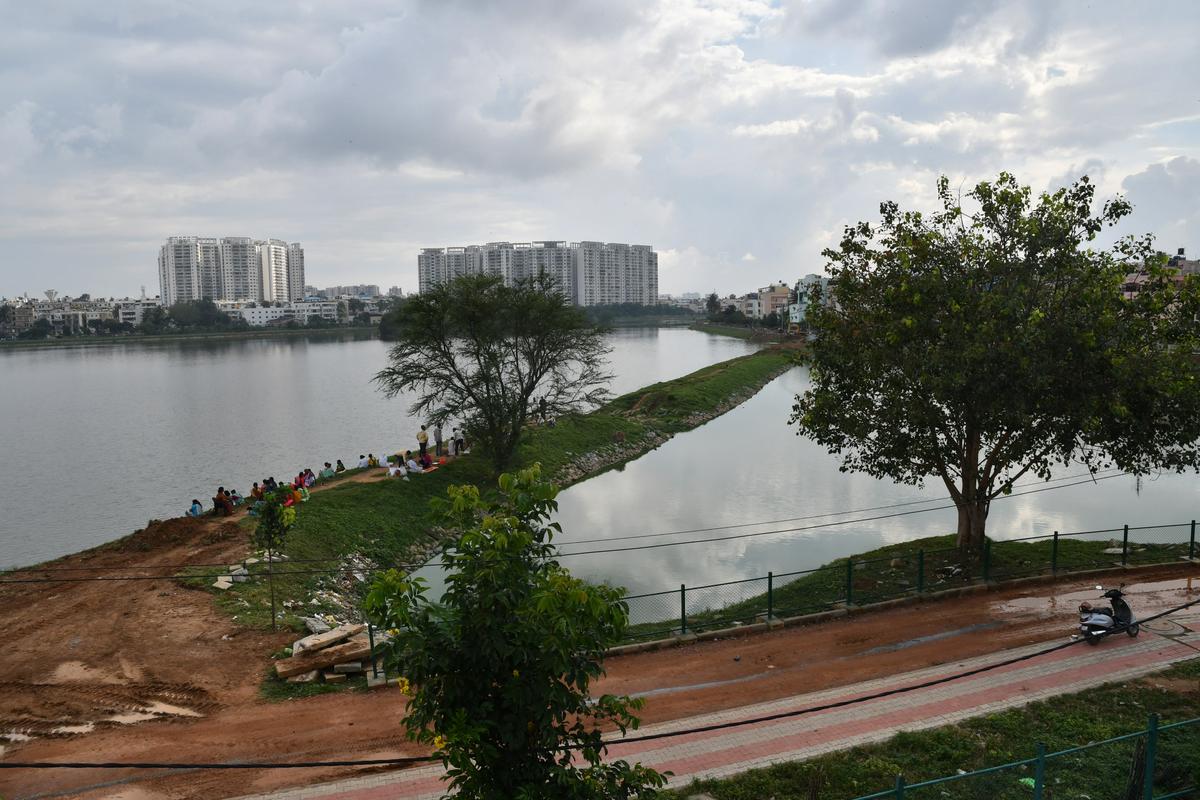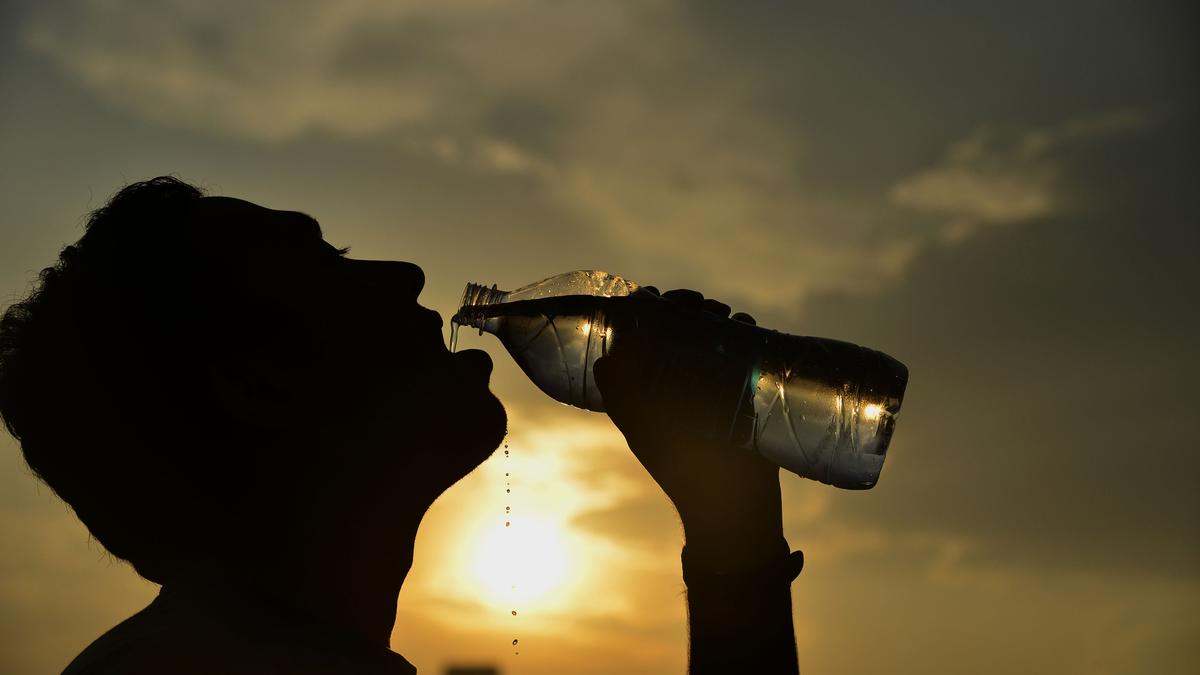On a record-breaking spree, the scorching summer heat in Bengaluru feels particularly intense this year for a specific reason: Its Urban Heat Island (UHI) effect has gotten worse, amplified by a widening network of white-topped roads, tree-less layouts, glass-façade highrises and heat-absorbing infra projects. The hottest day of the year on March 14 at 35.4°C could just be the start.
It is mid-April now and the enhanced UHI effect could take the intense heat to record levels this month. Last year, the maximum for the month had hit 38.5° C, less than a degree lower than the highest-ever temperature recorded for April in Bengaluru city: 39.2° C on April 25, 2016. The city’s once-celebrated green cover has depleted dramatically, trapping heat in more localised areas than ever before.
Typically, the UHI effect retains heat within urban areas and halts its dissipation. Heat-absorbing material in both buildings and concrete infrastructure aids this phenomenon significantly. Research shows that the temperature within the UHI areas could be 3 to 5 degrees higher than the surroundings, dramatically worsening citizens’ lives. Bengaluru’s continuing loss of trees and water bodies has only aggravated this trend.
The Bengaluru Metro Rail Corporation Limited (BMRCL)’ s Namma Metro Phase 3 Detailed Project Report (DPR) has lined up a total of 11,137 trees to be felled, making way for two corridors of 44.65 km. But, as environmentalist and legal activist Dattatreya Devare says, there is no information about the location of these trees.
A flower vendor uses an umbrella to protect herself from the intense heat in Bengaluru.
| Photo Credit:
SUDHAKARA JAIN
Skewed compensatory plantation
Compensatory plantation is the standard response for the loss of tree cover due to infrastructure projects. But Devare contends that these plants should be planted on the roadside and not in Nelamangala, Gouribidanur or Kolar. “Every quarter, the BMRCL was supposed to submit a report to the court on the compensatory tree plantation for the number of trees cut. They did not submit for almost one and a half years. On a court order, they last submitted a report in September 2024. Two quarters are over now, we are constantly reminding them,” he explains.
The agencies, he points out, argue that there is no space in the city. “I told them there is enough space on the roadsides. Finally, after our continuous efforts, the BBMP (Bruhat Bengaluru Mahanagara Palike) gave an affidavit in the court that in 2025-26, they will plant some 50,000 saplings which can now be taken by BMRCL. Let us see what they do, we are after them.”
Heat Wave Action Plan
Decades of research, both domestic and global, have clearly established the link between green cover and urban temperatures. There is also an existing blueprint on preparatory measures, as articulated by the Karnataka State Heat Wave Action Plan 2023-24. Under city-level medium/long-term measures, the Plan mandates a heat wave risk and vulnerability map for developing a strategic mitigation action plan.
Mapping hot spots within the city and integrating them into vulnerability assessment is also part of this plan. It also mandates measures to reduce the temperature in these hot spots by developing vertical gardens, small parks with a water fountain and other allied features. The plan further seeks to build an environmental assessment through the coordination of different research and educational institutions. Findings from this assessment should then be incorporated into urban planning design policies to curb future emergence of Urban Heat Islands, says the Heat Wave Action Plan.

Within a year of the rejuvenation of Sarakki Lake three years ago, the groundwater table there improved by 300ft. Last year, when the entire city was facing a water crisis and higher temperatures, the lake had enough water, and the groundwater table was less than 500ft.
| Photo Credit:
K. BHAGYA PRAKASH
Porous landscape down to 6.02%
Tracking Bengaluru’s land use patterns for decades, the Centre for Ecological Sciences at the Indian Institute of Science (IISc) shows the city’s drastic decline in green cover. The share of the city’s porous landscape (vegetation and water bodies) dropped from 68.2 per cent in 1973 to merely 6.02 per cent in 2025. During the same period, as indicated in the Bengaluru Urban Information System portal, the share of paved landscape (buildings, roads, etc) went up from 7.97 per cent to 87.64 per cent.
This stark trend is getting manifested in two clear observations, notes Dr. T.V. Ramachandra from CES, IISc, “No groundwater recharge is happening due to the dominance of paved surface. Since the landscape is not holding any water, there is also a heat increase in the system. The city’s temperature, which was around 19 degrees in the 1990s increased to 22 degrees in the 2000s and 28 degrees in the 2010s. Today, it is about 36 to 38 degrees,” he explains.
However, as one moves away from the city centre in any direction, the temperature is at least two to three degrees lower in regions with water bodies and parks. He cites the case of Sarakki Lake, rejuvenated about three years ago. “Within a year, the groundwater table there improved by 300ft. Last year, when the entire city was facing a water crisis and higher temperatures, the lake had enough water, and the groundwater table was less than 500ft. Besides, the high moisture content ensured that the temperature in that region was at least 2-3 degrees lower than the other parts of the city.”

Heat-absorbing material in both buildings and concrete infrastructure aids Urban Heat Island (UHI) effect significantly.
| Photo Credit:
K. BHAGYA PRAKASH
Power-hungry glass façade buildings
Glass façade buildings, a preferred choice at many tech parks and office complexes, are known to increase heat radiation in the surrounding areas. Dr Ramachandra draws attention to another oft-ignored factor: Higher electricity consumption. “In a normal building, if the consumption is 1,400 units per person per year, inside a glass façade building, it increases to 14,000 to 17,000 units. The consumption is 10 times higher, contributing to global warming which inevitably increases temperature.”
As reiterated in a study by Curtin University, elevated temperatures due to UHI effects can affect the thermal comfort of humans. This can potentially lead to heat strokes, respiratory difficulties, heat cramps, dehydration, and even heat-related mortalities. Among the particularly vulnerable are children, aged people and those with health concerns. Elevated night temperatures could lead to further heat stress.
In January 2025, an Institute of Wood Sciences and Technology seminar themed ‘From Concrete to Canopy: Urban Forestry for Greener Cities’ had highlighted the need to look at urban green infrastructure as a holistic system. Retired IFS officer Dr.K.N. Murthy emphasised the need to interlink green patches throughout the city and be made part of the planning process.
He had stressed visiting every tree in the city at regular intervals for maintenance, while recommending vertical green cover for buildings with glass facades to reduce the heating impact. Other speakers had drawn attention to the World Health Organisation (WHO) standard mandating 9sqmt of urban green space for every person.
Published – April 17, 2025 06:19 am IST
